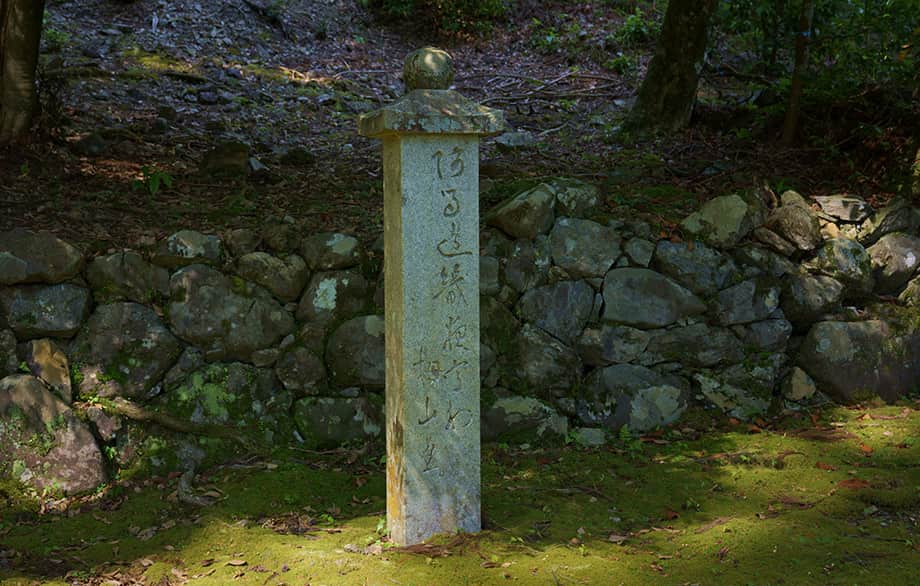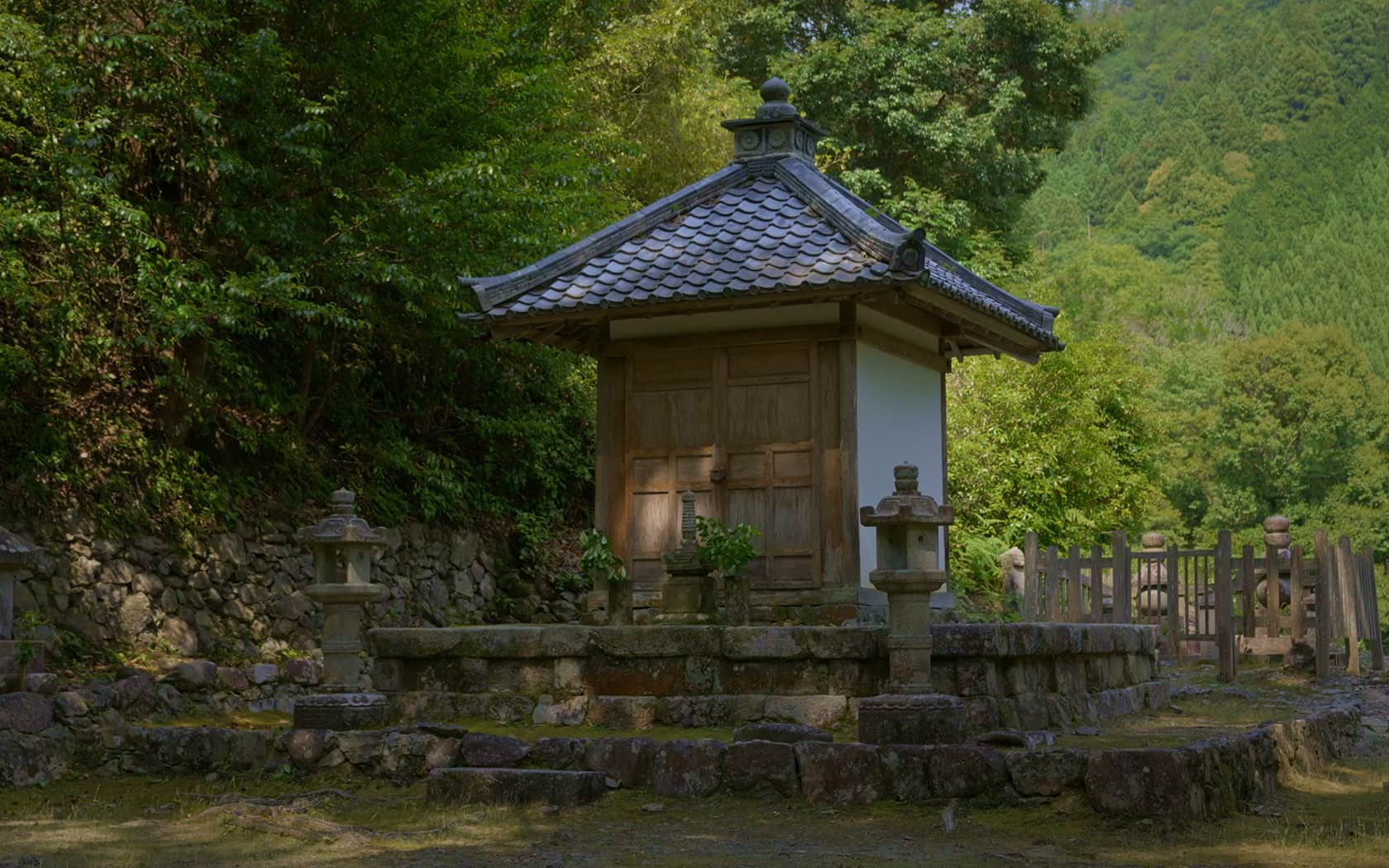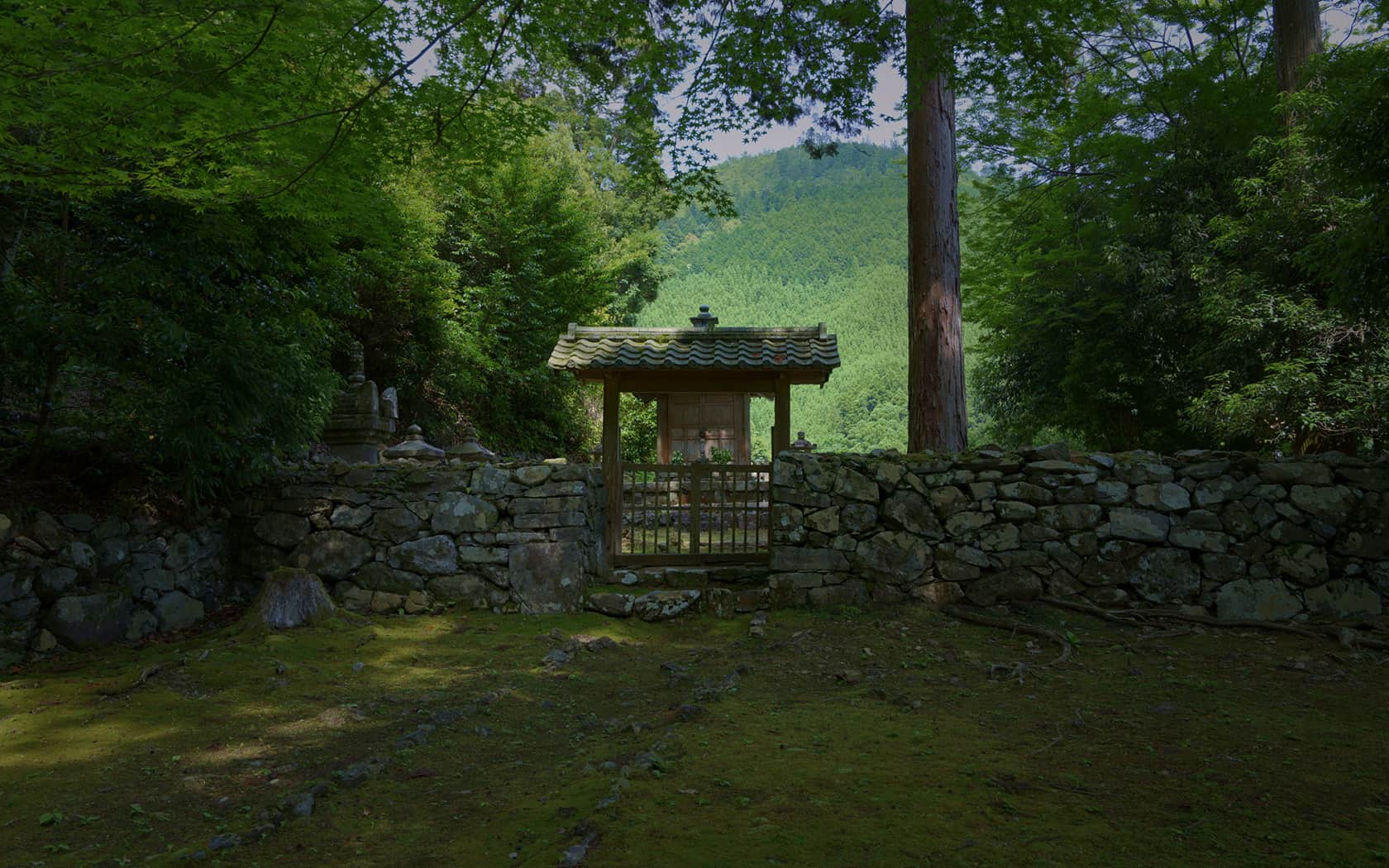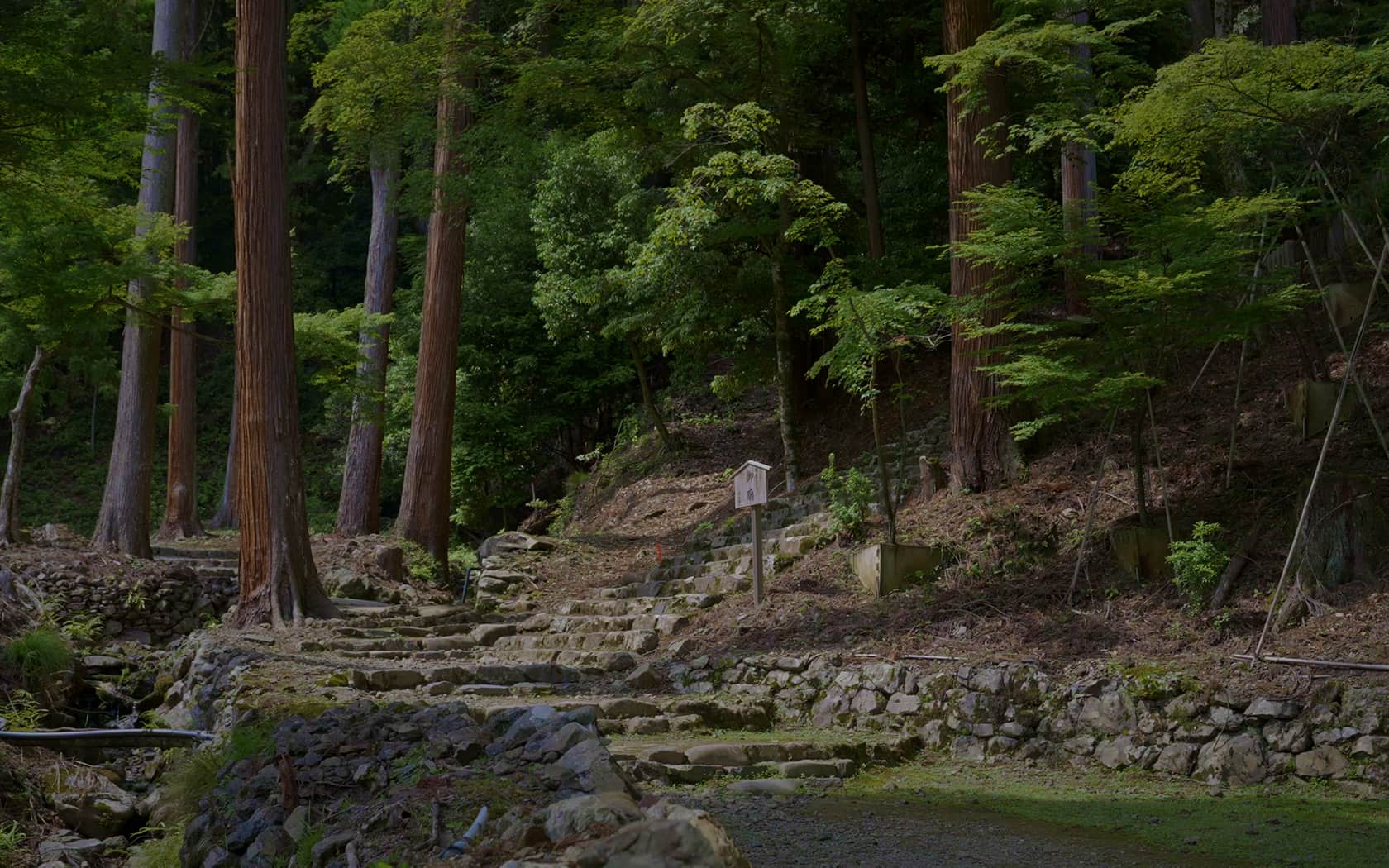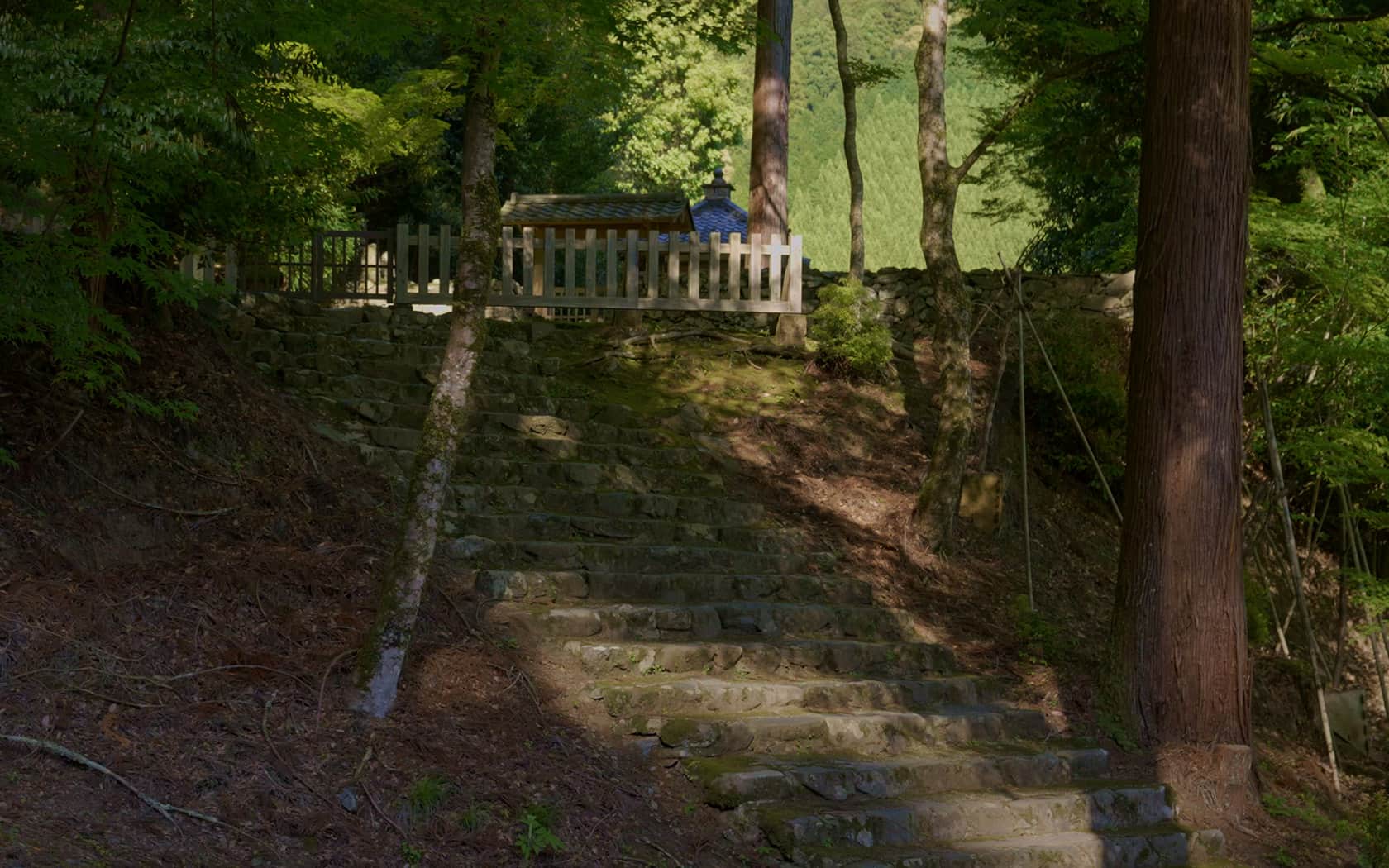This mausoleum is the final resting place of Myoe (1173–1232), the founder of Kosanji. Successive head priests of Kosanji are also buried here.
Inside the tomb is a gorinto (five-tier pagoda), a symbol of Kegon and esoteric Shingon Buddhist practices in Japan. The three-tiered hokyointo pagoda, built in the Kamakura period (1185–1333), stands to the far left of the mausoleum. Next to it is a smaller pagoda called nyohokyo.
Near the entrance is a stone monument engraved with Myoe’s last instruction, Arubekiyowa: “Do what should be done.”
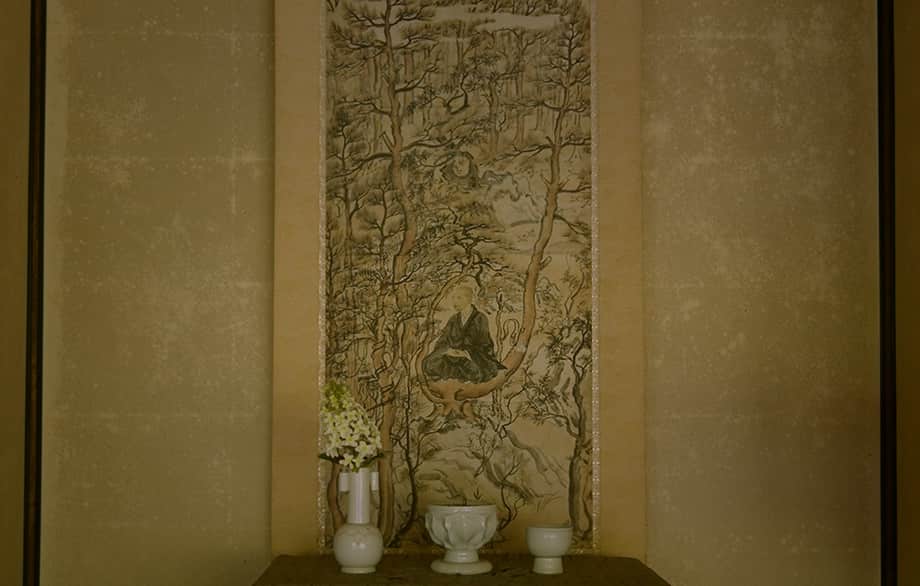
Myoe
Born in 1173 in present-day Yuasa, Aridagawa Town, Wakayama Prefecture, Myoe was a Buddhist monk known for rejuvenating the Huayan sect of Buddhism. After becoming a priest under Mongaku at Jingoji Temple, he studied Kegon Buddhism at Todaiji Temple and received the secret teachings from Konen at Kajuji Temple. He was awarded the land of Togano by Retired Emperor Gotoba in 1206 and built Kosanji Temple as the center of the Huayan sect. He died in 1232.
gorinto (five-tiered pagoda)
A type of pagoda or stupa. It uses five tiers of stone to represent earth, water, fire, wind, and void. The earth tier is a cube, the water tier is either jar-shaped or spherical, the fire tier has a pyramid-shaped cap, the wind tier is hemisphere-shaped, and the void tier is formed by a jewel shape stacked on top.
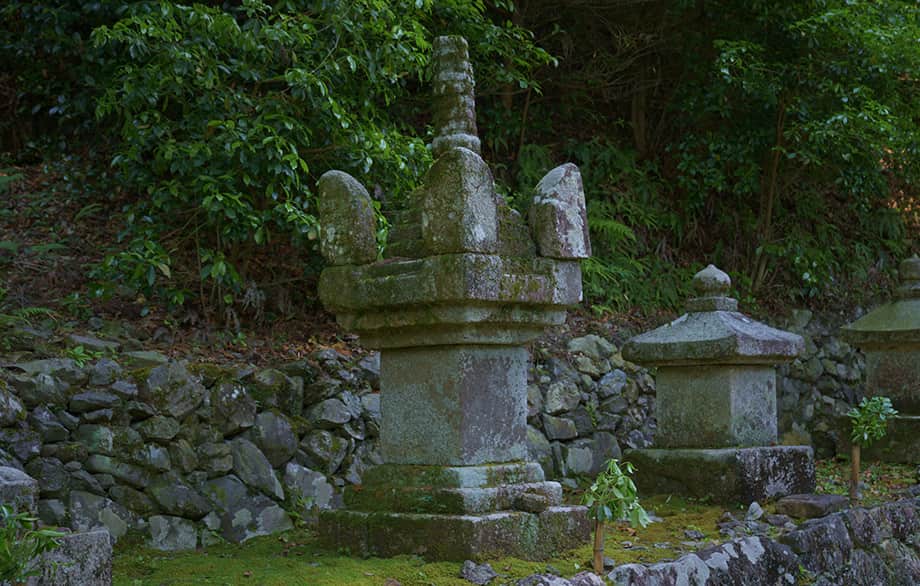
hokyointo pagoda
A type of Buddhist pagoda used for grave markers and memorial stupas.
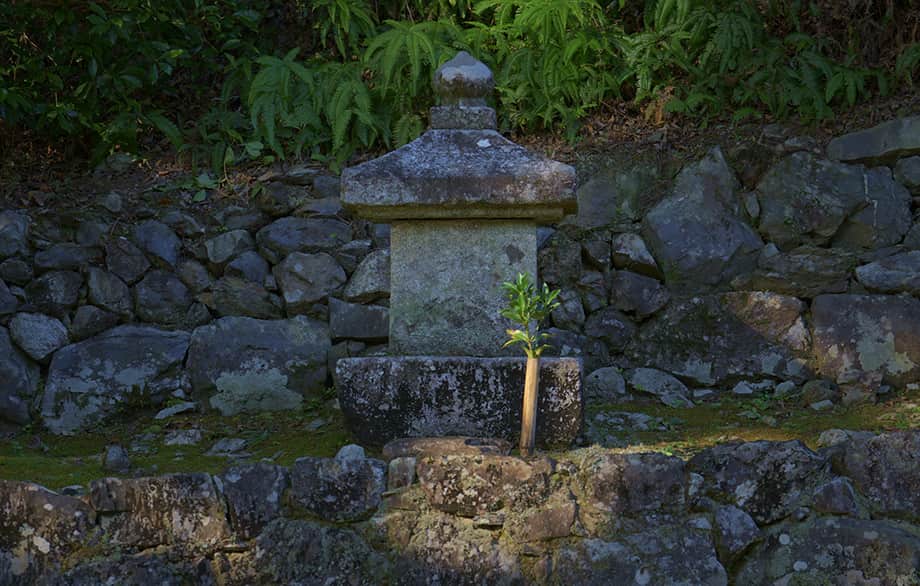
nyohokyo pagoda
